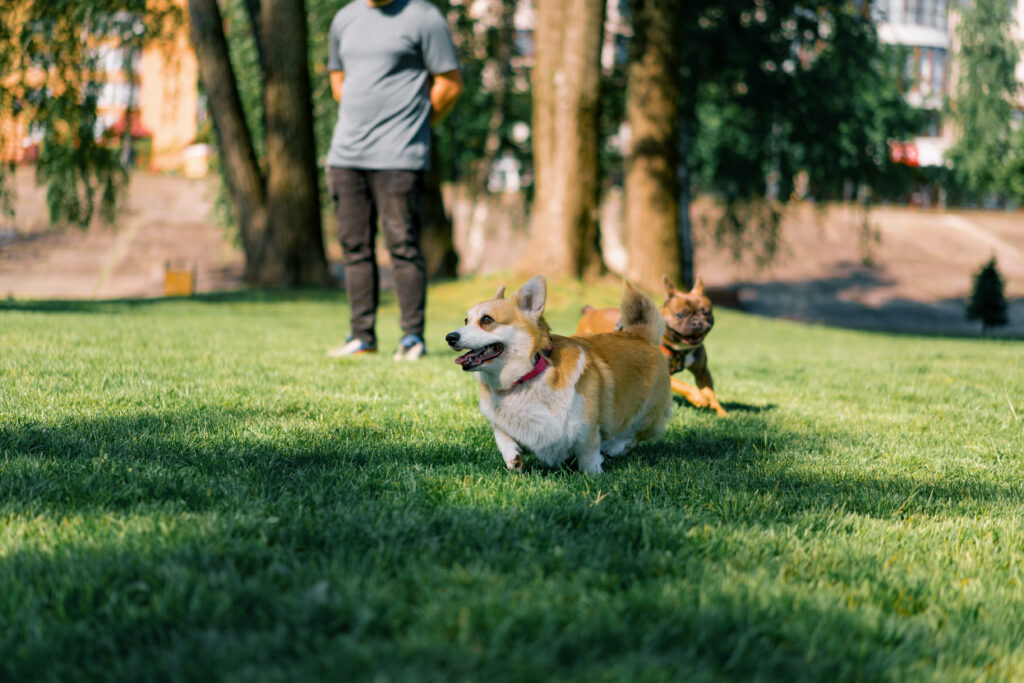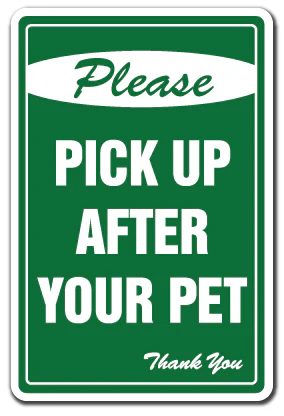The dog park is designed for both dogs and their owners. To make it enjoyable for everyone, you need to consider both needs. Dog Park Maintenance should be done often to ensure the dog park is a fun spot for all.

A Tail Of Two
Dogs and humans have their own ideas about what makes for a fun time. For example, what’s appealing to dogs isn’t always the same for us when it comes to smells.
While our furry pals might love sniffing around to see who’s been, most humans would rather skip that scent experience. This is where substrate comes into play. Everyone’s experience is significantly influenced by the type they choose, how well it drains, and how they take care of it.
Pups prefer turf because it stays cool for them, but consider the cost of regular mowing. If the grass gets too tall, it can be difficult to find poop.
Some parts of the dog park may need to shut down periodically to reseed or resod, as urine, chewing, and digging from dogs can cause bald patches over time.
When choosing bark or wood chips as a substitute for grass, ensure they have good draining properties. Look for a type that doesn’t splinter and consider a color for easy dog park maintenance. You should avoid sand, rocks, or decomposed granite in the summer because they can get hot.

Develop Well-Trained Visitors
Another key dog park maintenance task involves the furnishing in your park. You should put up signs displaying the park rules, including clean-up expectations, about every 100 to 120 yards. Check that everything is in good condition and easy to see in your maintenance plan. Trim the landscaping and remove any obstacles that might be in the way. There should be trash cans nearby, along with poop-bag dispensers that are fully stocked.
Dog Park Disasters
During routine maintenance, your landscaping team should be on the lookout for any risks, like:
- Holes that need to be filled
- Damaged site furnishings, like a chewed park bench that’s no longer structurally sound
- Holes in or underneath the fencing, taking care to check behind plants for hidden escape routes
- Downed tree limbs that are fun for dogs to try to carry, but not for owners who could trip
Fido-Friendly Flora
When assessing risk in the park, be aware of what’s thriving among the plants. Some common garden plants can be harmful to dogs. One example is the sago palm, which can harm the liver if eaten. Azaleas, oleanders, and aloe are also risky. You should check and compare the plants in your dog park, both those currently there and those you intend to add, with the ASPCA‘s list of toxic plants.
Pick Pet-Friendly Pest & Weed Control
Keep an eye on the insecticides and herbicides used in the dog park. Don’t completely ditch pest and weed control from your plans, especially since some weeds can be toxic and there are insect-borne diseases to consider. It’s a good idea to chat with your landscaping partner about options like manual weed removal or pet-safe pest control methods that could work for your park.
Go with a pack
One of the top ways to keep a popular dog park thriving is to gather a crew. This means partnering with a local dog group or starting a club focused on the park. Having a dedicated group of supporters can really help, as they’ll care about the park’s success and offer valuable feedback on what works and what doesn’t. With these suggestions in mind, you’ll definitely create a park that gets both dogs and their owners excited!
